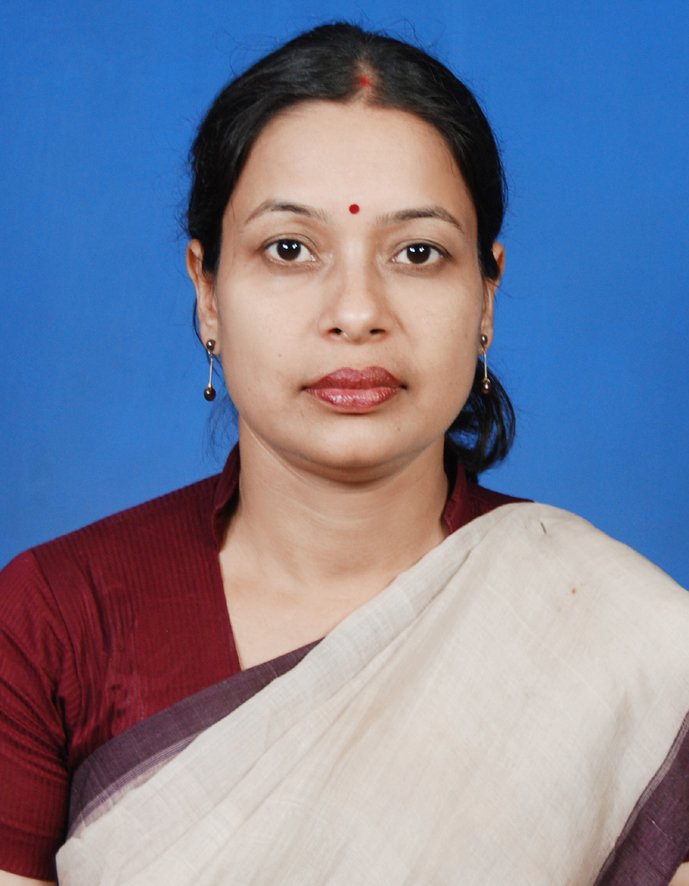Teaching is a Woman’s Job: Is this Opinion Justified?
Teaching is a Woman’s Job: Is this Opinion Justified?
Dr. Darshana Goswami
Different women down the ages have scripted the stories of their struggle and success as professional women in different fields. Sudha Murthy, co founder of ‘Infosys’ writes in her memoir how women were barred from applying for posts of engineer in India in the 1970s. Yet Murthy went ahead with her convictions, wrote a letter to JRD Tata protesting gender discrimination and became the first female engineer hired at India’s largest auto manufacturer TATA Engineering and Locomotive Company (TELCO), now Tata Motors. Now she is recognized worldwide as a successful entrepreneur, philanthropist and a motivational speaker. Noted British author Virginia Woolf wrote in her celebrated essay “Professions for Women” why many women in her days and in the previous century chose to be writers,
“Writing was a reputable and harmless occupation. The family peace was not broken by the scratching of a pen. No demand was made on the family purse. For ten and sixpence one can buy paper enough to write all the plays of Shakespeare –if one has a mind that way. The cheapness of writing paper is, of course, the reason why women have succeeded as writers before they have succeeded in the other professions.” (Woolf, 1931)

Though said in a tongue in cheek manner, Woolf’s statement does touch upon some serious issues like “family peace” and “family purse” regarding the choice of profession made by women. By ‘profession’ Woolf does not necessarily mean a paid job, but an enterprise that might need some initial investment. The wry sarcasm of the word ‘harmless’ too does not go unnoticed.
However, Woolf is of the view that women must venture out to all professional fields to recognize the full potential of their capability and creativity, “I mean, what is a woman? I assure you, I do not know. I do not believe that you know. I do not believe that anybody can know until she has expressed herself in all the arts and professions open to human skill.” (Woolf, 1931) Woolf discerns that as long as a woman prioritizes her domestic duties over her career, she will not be a successful woman of profession and therefore, she suggests that women must kill ‘the angel of the house’ in them, who is the caregiver and nurturer and who does not keep anything for herself.
With the passage of time, more and more women took up the challenge of exploring the unexplored or less explored territories and achieved excellence. They have contributed to their own society and the greater human society by being teachers, administrators, politicians, entrepreneurs, journalists, sportspersons, writers, artists and so on. Yet, a flexible movement between household duties and careers has always remained a priority for almost all women, though women’s social, educational and political status seemingly has marked some radical changes over the decades. And, it is the job of teaching that gives women the desired flexibility between home and ‘work’. It is more or less agreed that since teaching has a ‘fixed’ schedule, the other family members find it convenient to adjust with that schedule. This is one of the reasons why women across countries and continents choose to be teachers, and have outnumbered men in this profession.
But, can that be also the reason why ‘teaching’ should be feminized? Do not women pursuing other careers perform their responsibilities towards their families? Do not they excel in any other profession than teaching? The answer is ‘No’ and we know that! In addition, when we feminize teaching as less challenging and a mere extension of a woman’s domestic duties, we also belittle men, for many great teachers are men. That is why we celebrate the birthday of Dr. S. Radhakrihsnan in gratitude to the teachers for their contribution.
In fact, to call teaching a woman’s job only reflect our deep seated conformation to patriarchal hegemony that dictates almost all our thoughts and activities. There are women who become teachers by their own choice; some women become teachers because of their financial condition. There is a third group of women who dream of pursuing careers in other fields like journalism, administration, fashion, etc., but they are ‘compelled’ to take up teaching. The society imposes an implicit pressure on women to remain in the teaching profession.
The society expects them to remain in this domain so that there is no disruption in familial or societal equilibrium because of readjustment with a mother or a caregiver’s irregular work schedule long absences from home. At this point, Nancy Hartsock’s comments seem to be relevant,
“The organisation of motherhood as an institution in which a woman is alone with her children, the isolation of women from each other in domestic labour, the female pathology of loss of self in service to others – all mark the transformation of life into death, the distortion of what could have been creative and communal activity into oppressive toil” (Hartsock, 1983)
Here, Hartsock does not necessarily means that women who choose to be mothers would call motherhood a barrier to achieve something more. Her suggestion is that if there is a shared responsibility of raising children, then a mother can participate in other productive quests.
Another bitter truth is that talented and capable women are always regarded as threats to male supremacy and therefore, their appearance in public domain is unwanted. In teaching, women’s professional activities remain limited to school compounds; they do not need to interact in the wider public spheres or take part in decision-making or policymaking. Thus, the invisible ‘purdah’ system still exists for women in our societies, which keep them invisible in public sphere. If we look at the statistics of female teachers on the one hand and female principals on the other, the picture of gendered power structure of our society will come out clearly. We may add at this point that there is a big disparity between the number of female teachers at school level and at higher and technical or management education sectors. At higher education or management and technical education, teaching is associated with the glamour of intellectuality and power, and therefore, there is an invisible barrier that denies women easy access to those sectors.
Thus, it is certainly ‘wrong’ to call teaching a woman’s job only. There should be easy access for women to explore all professional fields according to one’s skill and efficiency on the basis of equality between the genders and also with minimal social and familial disharmony. We do not certainly imagine a picture of drastic role reversal in which all our soldiers at the frontiers would come back to take the responsibility of their home and hearth and all the mothers would go to the frontiers to fight wars!
At the end, on a deeper and positive note, let us remember that a teacher does not enter her/his classroom as a female or a male, but as a ‘teacher’. Let us also acknowledge that teaching is not just a ‘job’ like many other jobs – it is a calling; only highly motivated and inspired individuals can be teachers in the true sense of the term, who can instill inspiration in millions generation after generation. Teachers bear the larger burden of moulding the character of humanity, irrespective of past, present or future.
References:
- Hartsock, Nancy C M. “The Feminist Standpoint: Developing the Ground for a Specifically Feminist Historical Materialism”, (Feminism and Philosophy: Essential Readings in Theory, Reinterpretation and Application), Westview Press, 1983
- Murthy, Sudha. ‘Appro JRD’ https://www.tata.com/newsroom/heritage/appro-jrd-tata-sudha-murthy-tribute
- Woolf, Virginia. “Professions for Women” (Virginia Woolf: Selected Essays), Oxford University Press, Oxford, 1992

Dr. Darshana Goswami (1975) is an Assistant Professor (senior) of English at Nalbari College, Assam. She regularly contributes articles to newspapers and magazines and she has great interest in gardening and textile designing.
.




